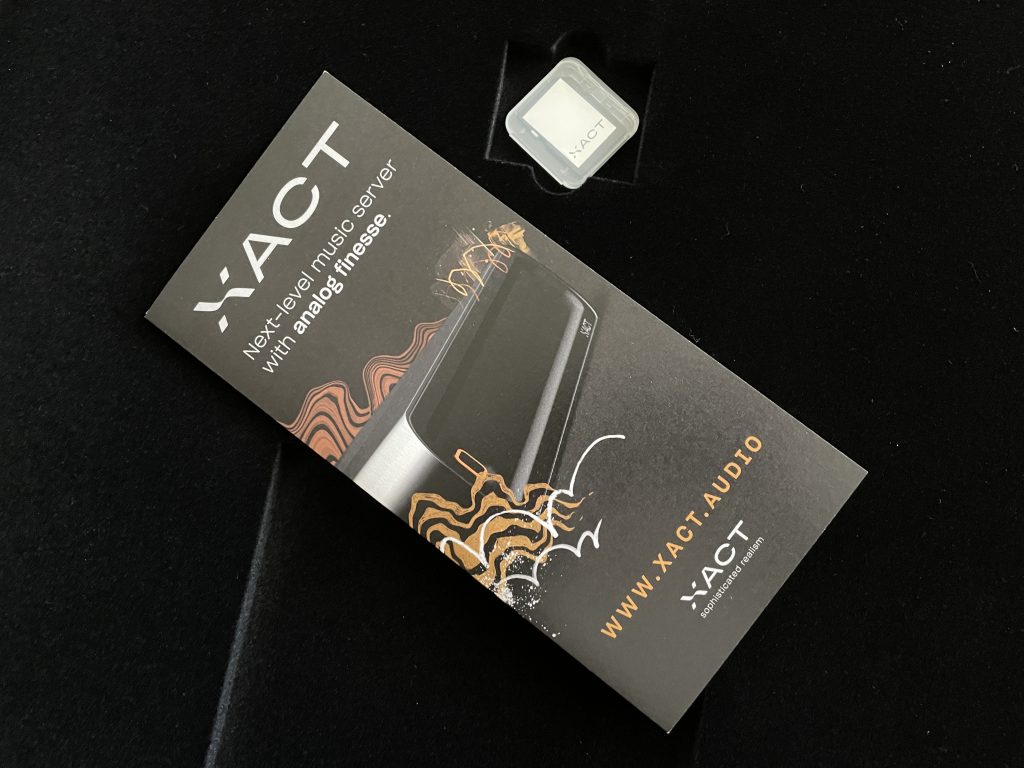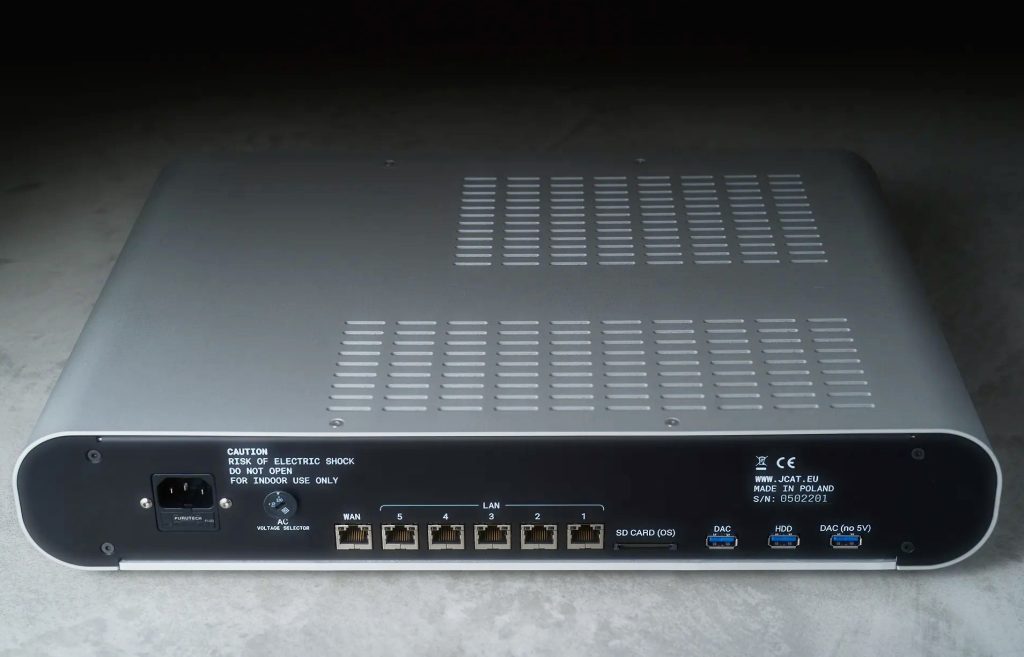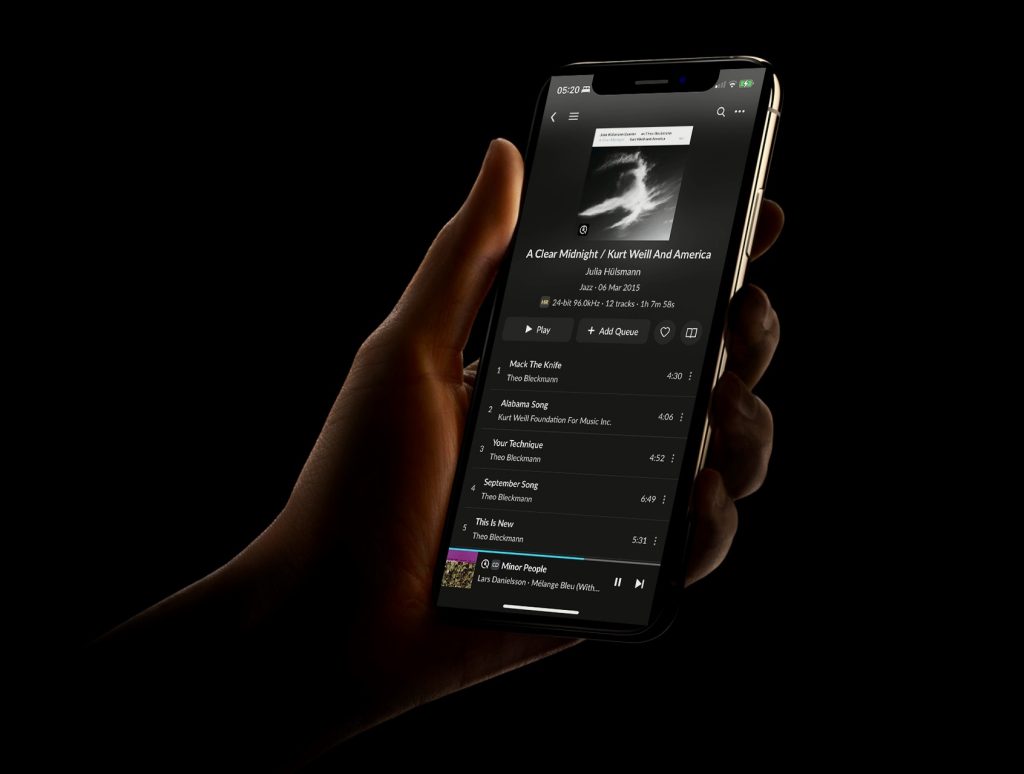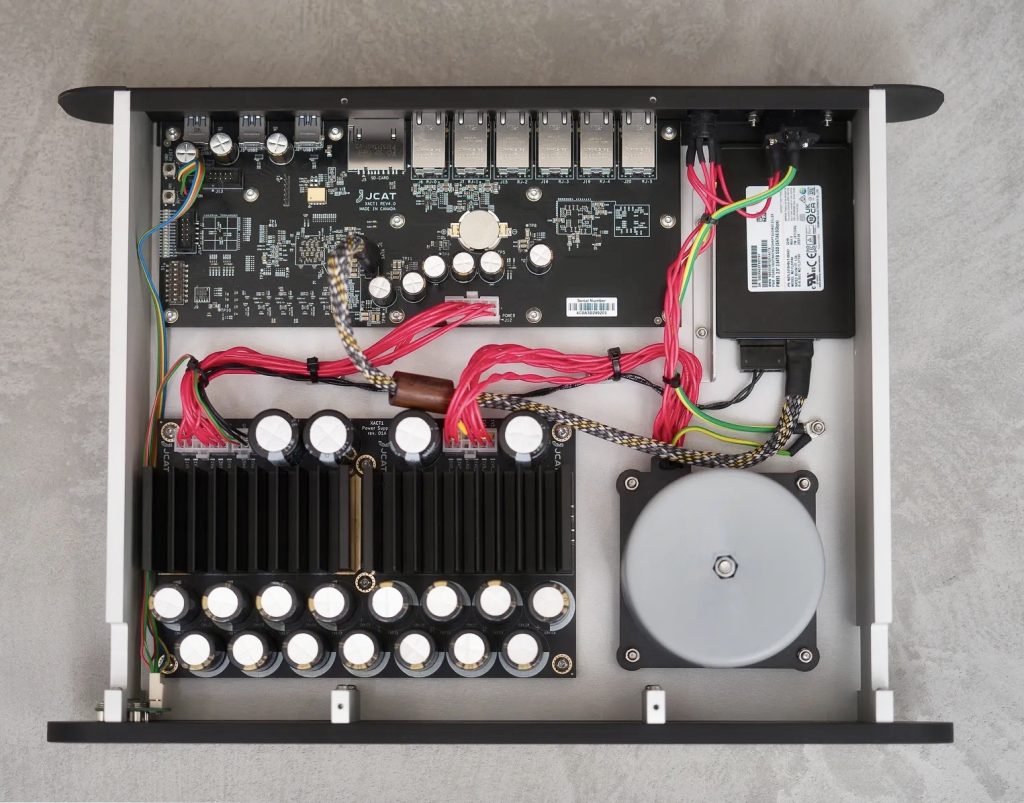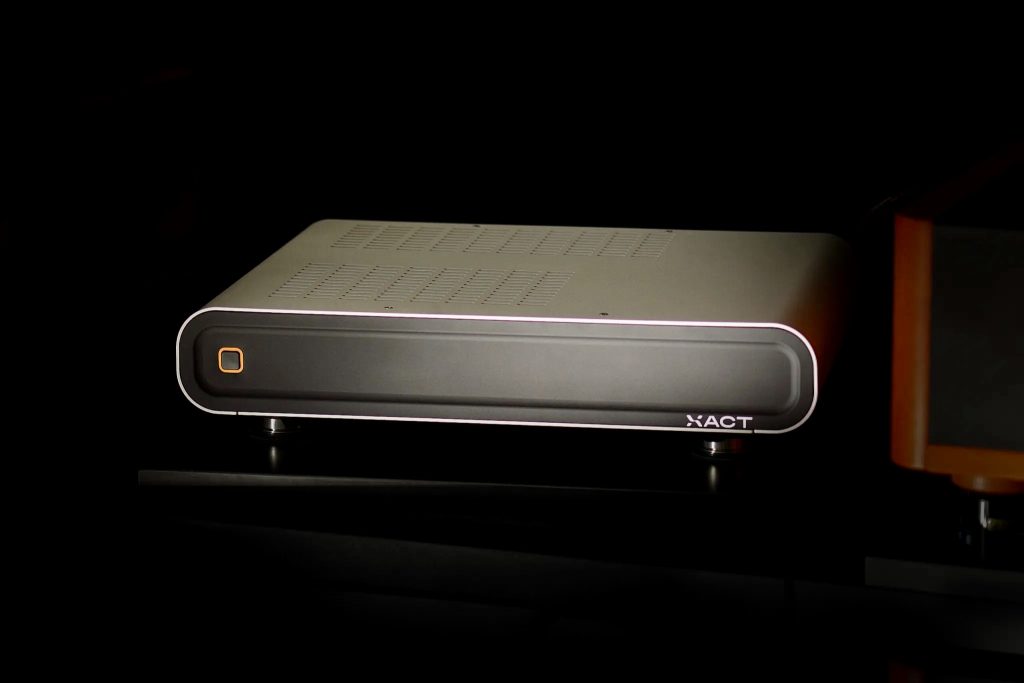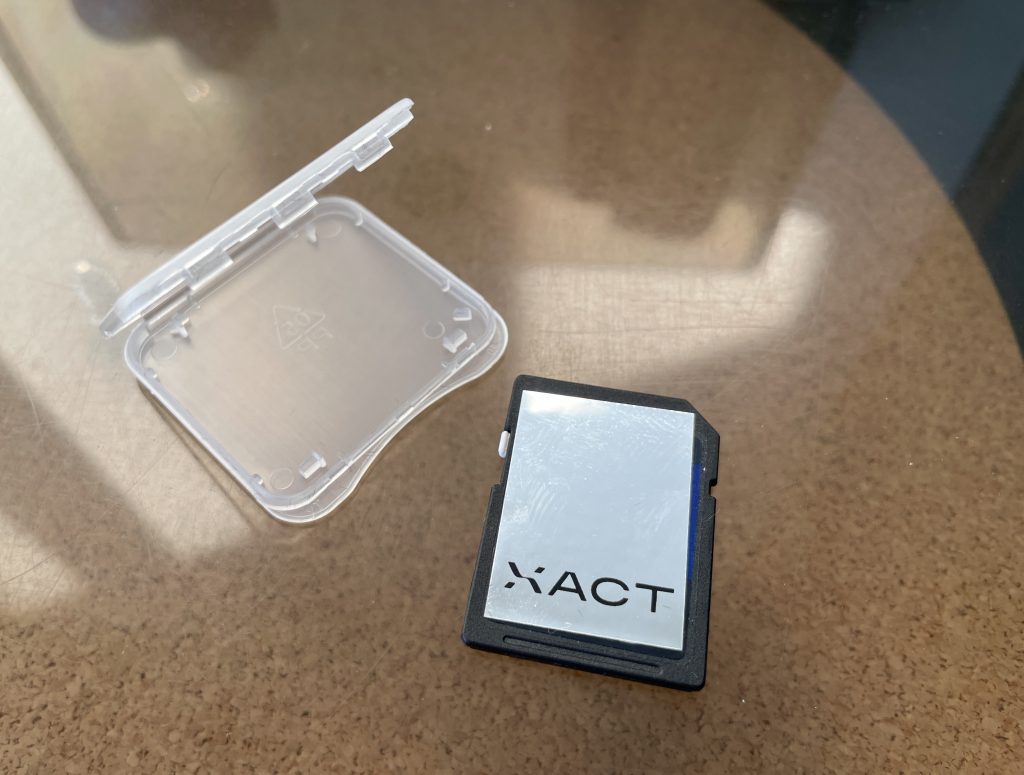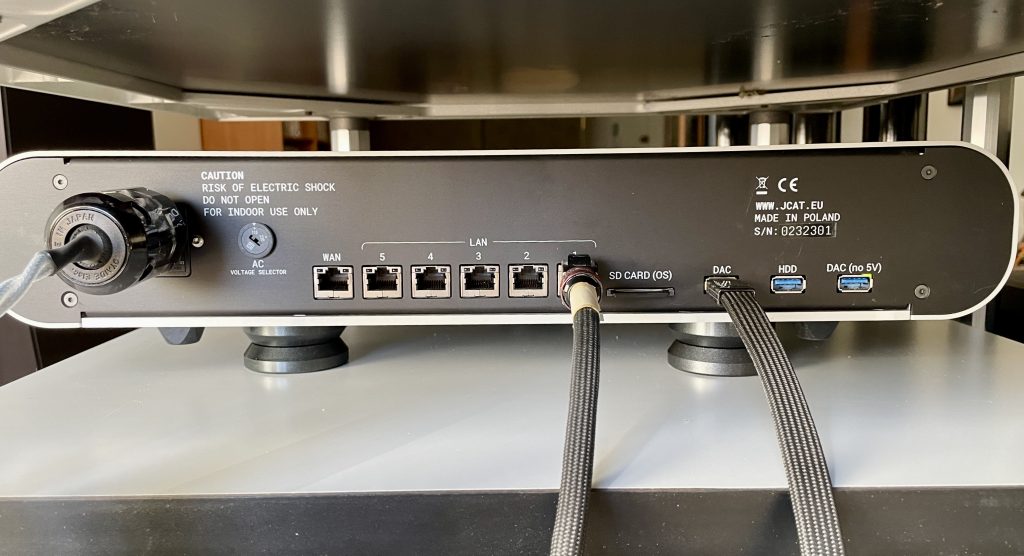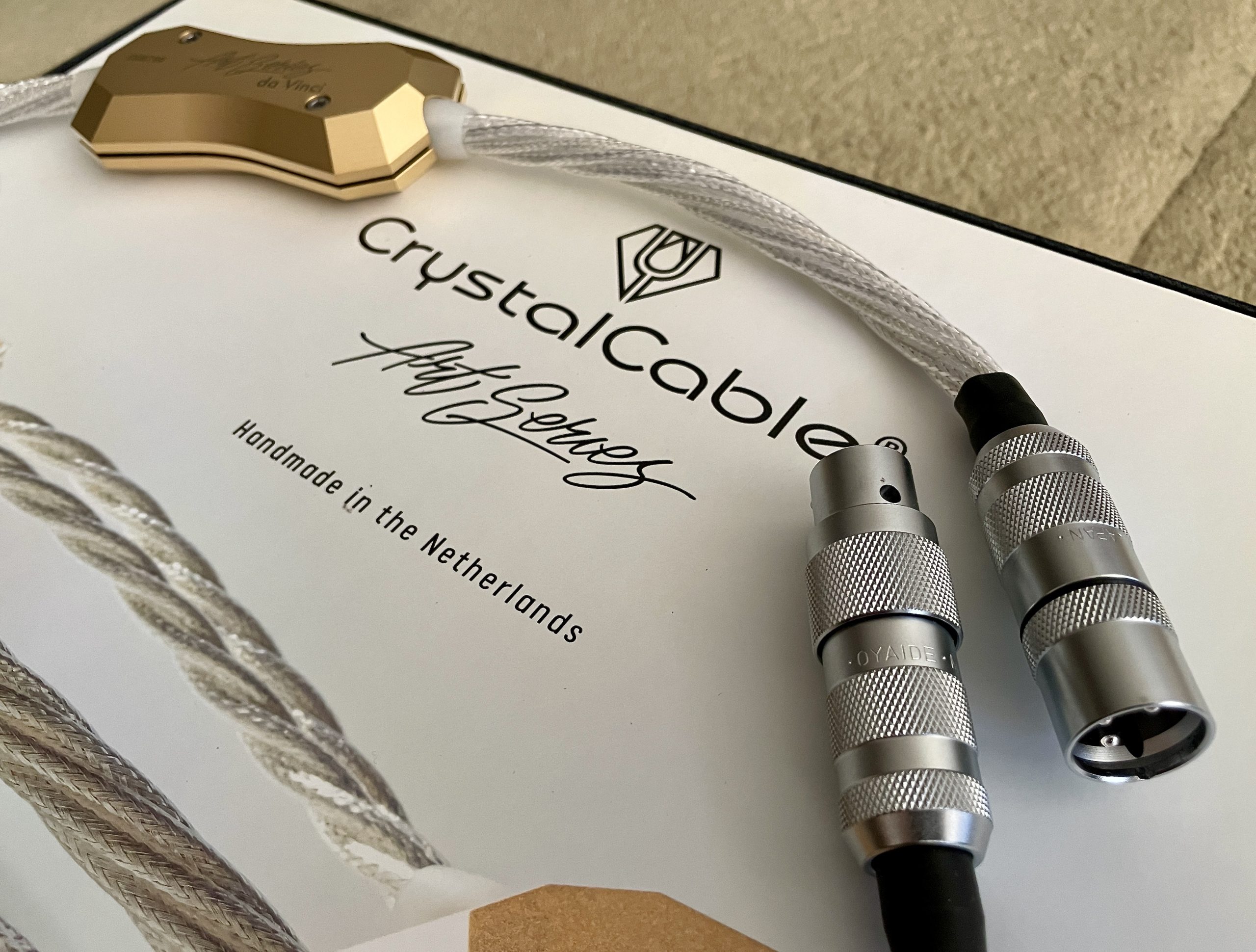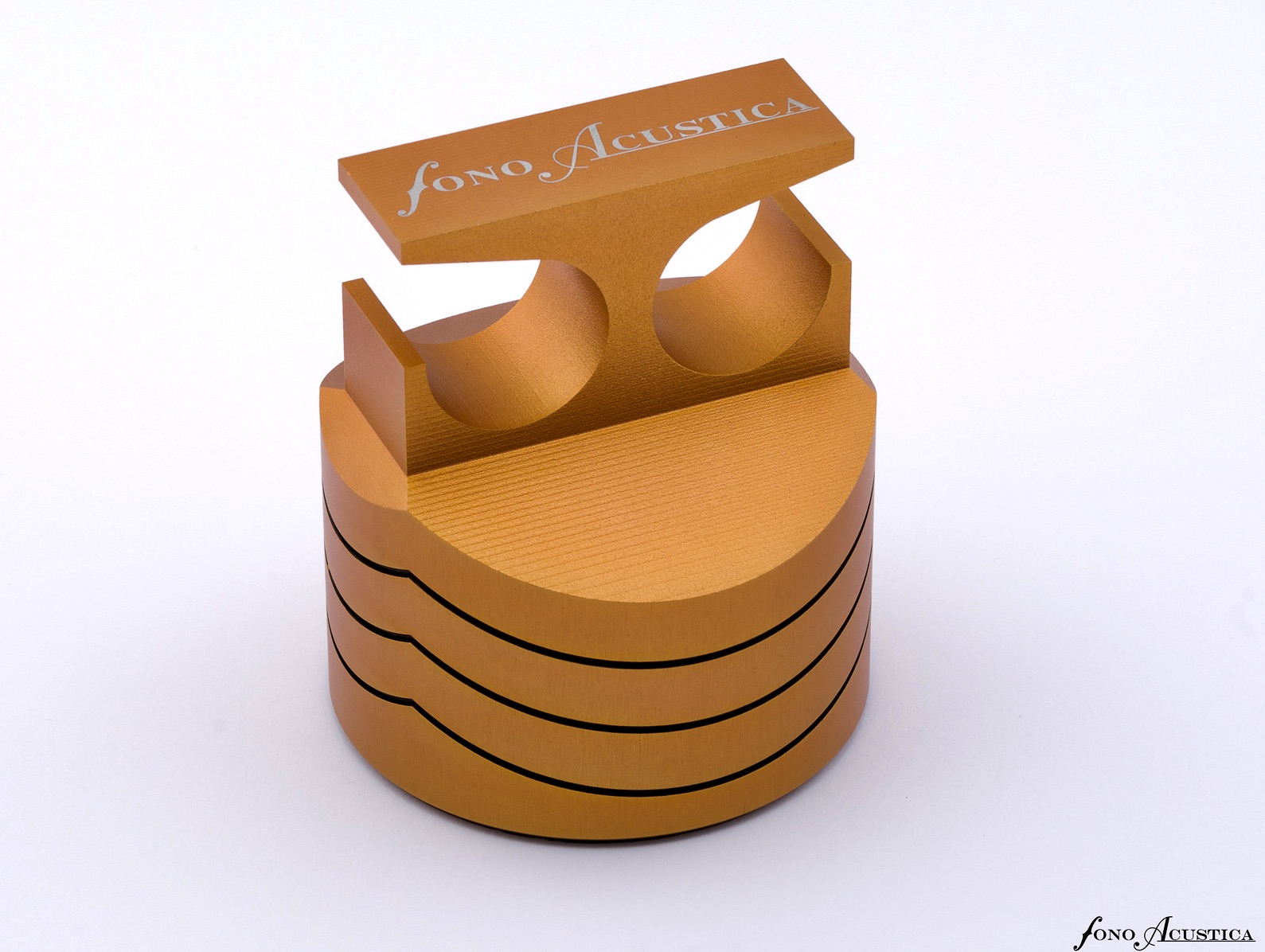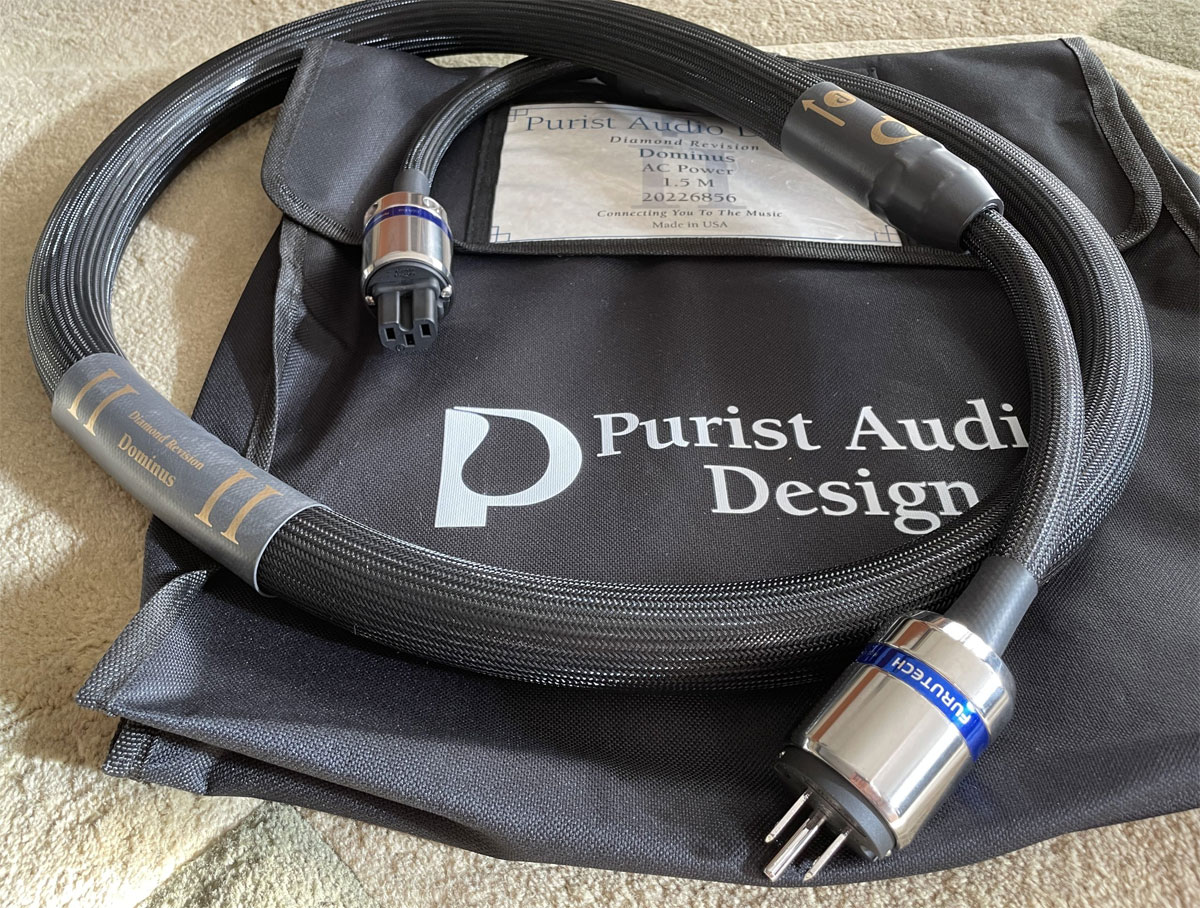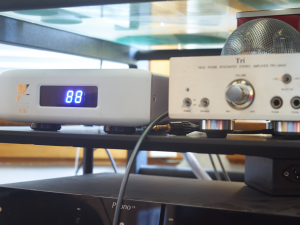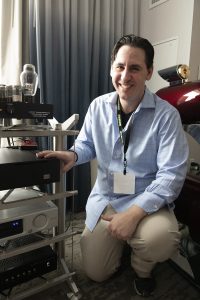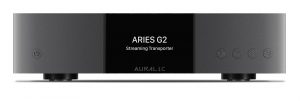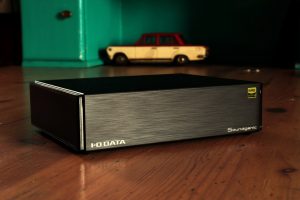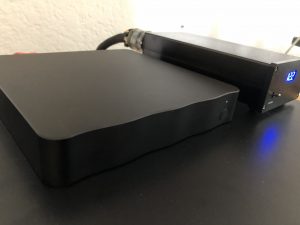The brochure included with the XACT S1 music server hammered on the point again and again. Digital that doesn't sound like digital. More like vinyl. The single-minded focus caused me to reflect on the scene and our recent history. What began with Perfect Sound Forever in 1983 is now snubbed in 2024. The new standard is a return to the previous standard (analog). That we have come full circle I find amusing, but not surprising, because my chums and I never got on board the digital train. The only question is what took others so long to come to their senses.
But stop and think for a minute. Although we hold vinyl up high, even that medium comes with its own distortions, artifacts and colorations. It is not the ultimate reference. As Lynn observed after a recent listening session with the panel, "There's digital; there's analog; and there's acoustic. Audiophiles know what analog sounds like; they know what digital sounds like. The comparison should be to the sound of a live performance with unamplified instruments. Does it sound acoustic?"
XACT S1 quick start guide
Focusing on server products, XACT is the third brand from Marcin Ostapowicz, the founder of JPLAY (software) and JCAT (hardware). Established around ten years ago in Wrocław, Poland, these companies have amassed a large fan base and a reputation for innovative products.
Manufacturers provide technical manuals but, as many consumers will attest, installing a music server can be daunting. Hand-holding is often required. The S1 brochure claims installation is as "simple as it can be. Just click the button." Actually, the S1 installation PDF lists six steps.
- Connect a USB cable to your DAC.
- Insert the included SSD card in the SSD card slot.
- Connect an ethernet cable from your network.
- Connect a power cord.
- Press the power button on the front panel.
- Install the JPLAY app on your iOS device (iPhones, iPads and M CPU equipped Macs. Free lifetime subscription).
JPLAY app on the iPhone
Configuration Issues Crept Up in my Setup
A couple more clicks were needed to finish installing JPLAY and it all went smoothly. There were no choices or options to figure out—except issues unique to my configuration crept up. When streaming PCM files from Qobuz, playback would stop and error messages appeared on the JPLAY app on my iPhone. It didn't take long to determine the cause. I use the Nordost QNET ethernet switch and followed their setup instructions:
Each port on the QNET is optimized for its application. Three of the five ports are auto-negotiated 1000BASE-T (1 Gbps) capable, which should be used for the router and other generic network devices. The remaining two ports are fixed to 100BASE-TX (100 Mbps), a speed at which internal noise reduction is possible, making these ports best used for primary audio servers/players or external media sources.
Marcin told me to switch from the 100 Mbps port to the 1Gbit connection and, sure enough, most of the errors disappeared. He emailed more info about this (lightly edited):
Some manufacturers of switches claim that 100Mbit is better, but that's not the case with XACT S1. With many servers the data is synced/buffered to mitigate issues one might have with network performance. With XACT S1 and JPLAY app there is nothing in between, so network performance has to be good to avoid communication errors. Provided you have good internet service, the 1Gbit connection is not only faster and more reliable (particularly when using streaming services), but sounds better.
More Marcin emails arrived in my in-box, as we worked to resolve the remaining errors (lightly edited):
These devices benefit from more internet bandwidth—not bandwidth per se, but more bandwidth headroom, or unused capacity, to account for possible network fluctuations… It amazes me, because when the XACT S1 is playing a local file, wi-fi does not transmit any music related data. But by improving the network, i.e. by installing a better network switch, better power supply for network components, and better LAN cables, you will get an improvement in sound for both local files and streaming. It is the same for any music server/streamer.
I went online to learn more. The incoming bandwidth from your router is spread among all of the connected devices in your home. With that in mind, the second piece to the solution fell into place: giving a larger share to the S1 by putting my MacBook laptop to sleep while streaming. Bingo! Playback errors while streaming from Qobuz were eliminated ninety-five percent of the time. Note these issues did not occur when playing music files from the S1's included 4TB SSD.
Do audiophiles need an upgraded internet plan? If I bought the S1—or any high-end server—and wanted to extract its full potential, I would definitely look into more robust internet service and possibly a new modem, router, etc. Internet technology is continuously on the march.
The Promise of Increased Fidelity
To the extent that the S1 strips out buffering (or caching) and error correction, the signal path is simpler and shorter. The second most mentioned feature in the brochure is The motherboard is developed from scratch, has only linear regulators, and runs solely on linear power. The dedicated power source is 100% linear without any switching components. Theoretically, both of these features should bring a bounty in terms of fidelity and purity.
Golden Age Voicing
Many consider the Golden Age of classical recordings to be the decade from the birth of stereo in the late 1950's through the mid 1960s. The same era also gave rise to the renowned Blue Note sound. Collectors treasure those LPs; many audiophiles consider them the sonic grail. Despite engineering "advances" that have come since, the master tapes from those early tube recordings have never sat idle for long.
The S1 puts you in mind of that happy time. Similarly warm and smooth, with long decays, plentiful bloom, and a really saturated, grainless sound, it has a bit of that golden glow. (Unusual for a solid-state digital device, to say the least.) The treble is sweet, soft, and rounded; the low-end is well-represented and packs a punch; the midrange is full and lively. With a tonal center of gravity in the lower mids, the S1 has the kind of comfortable ear-feel that tends to make people smile. The opposite of lean and mean, it is warm and friendly.
A Mysterious Dark Atmosphere
I cued up John Williams' Violin Concerto No. 2, with the Boston Symphony Orchestra and Anne-Sophie Mutter, soloist. (While Qobuz sounded great, files from the included SSD beat it and that's what I used for the evaluation.) My expectations were low, given Williams is known as a composer of Hollywood film scores. The quiet introduction immediately establishes a dark, enchanting air of mystery suggesting night time. Engaged right away, I had to remind myself: digital components are supposed to be airless and dry. This acoustic was almost wet and conjured a dark atmosphere. How does that happen? The only sensory input we're processing is sound—how does a second sense (vision) get stimulated? I believe it's the same way we can "see" images on a virtual soundstage. When the ambient (room) and location (image) cues are especially compelling, the brain gets the second sense involved.
the Big 3D Soundstage
The S1 has extraordinary dimensionality. To put it in perspective, let's look at how it's usually done. Digital gear is expert at soundstage width and good at height. The sections of the orchestra are layered in receding rows and the instruments are where you expect them to be. But the rendering is not convincing. It gives the impression of cardboard cutouts standing upright. What's missing is the third dimension—roundness in space—the images don't have volume. This flatness is a well-known digital issue.
Analog source does not have this problem, and neither does the S1. The 2D cutouts are fleshed out, almost sculptural. But wait, there's more. The images are projecting out from the stage into the room. This is so unexpected it may take the listener a moment to digest. Way beyond digital components I've encountered, or even most analog components, the nearest kinship to this kind of spatial holography is tubes. The S1 is certainly not conforming to stereotype.
The S1 places the listener in a large, reverberant hall, with most of the orchestra layered behind the speakers. Instruments are placed at all points on the stage, there are no dead areas or gaps. It is densely populated—the entire front of the room is occupied—and appears continuous across the span between the speakers (and sometimes beyond them). Dimensional cues are soft, allowing the images breathing room, and well-developed so they are easily separated.
Let's Talk About the Stage Background
I never understood how the empty, black silences created by digital components became such a vogue. There is nothing natural about that. At any live event people are shifting around in their seats, unwrapping cough drops, always making ambient sounds. Yes, it's quiet, but it ain't a black void. The S1's background is not the digital kind of silence. It is quiet, but does not feel like an unnatural dead zone.
Dynamic Range
The S1 boasts 140,000 uF, a significant margin of capacitance, to ensure unrestrained dynamics over the lifetime of the product. I'm not sure if that number is high or low for a server, but macro dynamics impressed me with the range, density, and fullness of the images, which had real presence. Many components create fast, exciting transients by positioning the treble slightly ahead of the wavefront. This is a gimmick. The S1 shuns the artificial excitement and speed in favor of accurate alignment and frequency coherency.
For some reason, systems and components often have difficulty with low-level SPLs. Typically, dynamic range constricts, the tonal palette loses color, and the sound becomes lifeless. The way the S1 plays quiet passages, this issue never arose.
Cosmetics and Build Quality
The XACT S1's chassis is high-end minimalism. The S1's large rectangular chassis takes up most of a shelf (439W x 315D x 86H mm. Weight: 9 kg). A thick, brushed aluminum slab wraps around the top and sides, with air vents on top (although it barely gets warm). A prominent amber On/Off switch is all you'll find on the harmoniously shaped milled matte black front panel. There's no visual display to indicate what's playing or other switches. The rear is also straightforward: IEC power plug jack; six Gigabit Ethernet ports (for future network switch & router capabilities); SSD card jack; two USB outputs (with and without 5V power bus). Four stick-on bumpers on the bottom serve as footers. A neat feature is updates to the software can be accessed on the internet. You load the update to the SSD card, pop the SSD card back in the S1 card jack, and the new OS gets loaded when you power up the S1.
A knuckle-wrap on top yielded a dull, metallic ring, while the faceplate repelled my knuckle with no sound. It's worth experimenting with weights on top to tame chassis resonances. The best of these was the Audio Realignment Technologies 5X mat (MSRP $3950, review coming). It did its thing—purging some softness, shortening decays, focusing images, expanding dynamic range, increasing resolution—as it does on top of every component. If you try one of these ART mats, best to have your wallet handy.
the XACT S1, USB Setup
The S1 was placed on my TAOC ASIII rack with a set of TITE-35S footers below, a very effective isolation system. To enhance grip and precision, I connected one of its unused ethernet plugs to the Nordost QKORE ground noise reduction unit. I already mentioned I used the Nordost QNET switch (powered by their QBASE LPS). Excellent results were obtained with STEALTH Black Magic Ethernet V.19 ($1600/m) and USB-T SELECT ( $1650/m). A Crystal Cable Monet power cord ($6400/1.5m) connected to the Audience Adept Response conditioner provided optimal power. I surrounded the S1 with neutral wires and accessories to complement its musical voicing.
Burn-in
The S1 burned in at the factory for a week. The guidance was to give it another week with music. At that point it was soft, bloomy, and low-resolution. The chrysalis needs three weeks, more likely four, to emerge in its fully-formed adult state. Have patience; it's worth the wait.
Conclusion
It strikes me that what I've written isn't the same old copy you read in reviews all the time. That's because the XACT S1 music server tends to break the rules. As Marcin Ostapowicz, the designer and proprietor of XACT, explains:
XACT S1 delivers on my vision of audiophile sound: natural, organic, with analog sophistication and lifelike imaging. It's hard to believe it's digital.
He succeeds more than you'd expect. This solid-state digital music server inspired thoughts of the Golden Age of Stereo, that high-water period in tube analog recordings dating from sixty years ago. It has the kind of frequency response and comfortable ear-feel that tends to make people smile. There's even a bit of the golden glow.
The way the S1 reproduces space will make you do a double take. Digital has well-known issues regarding image depth, in particular roundness in space. The S1 overcomes that by fleshing out the missing dimension. Then it goes a step beyond and projects the images into the room, creating the kind of spatial holography we associate with tubes. To say the S1 is unlike other digital components is an understatement.
XACT is a new marque focusing on music servers from a talented designer with a unique vision. In the near term, be on the lookout for a range of products and accessories, including reference level wires, a master clock, and an ethernet switch. This designer has something different to say and it is worth paying attention.
XACT S1 Music Server
Retail: $13,900
STEALTH USB-T Select Cable
Retail: $1950/m
STEALTH Black Magic Ethernet V.19 Cable
Retail: $1600/m
XACT
STEALTH Audio Cables
Distributor for XACT
Aaudio Imports




